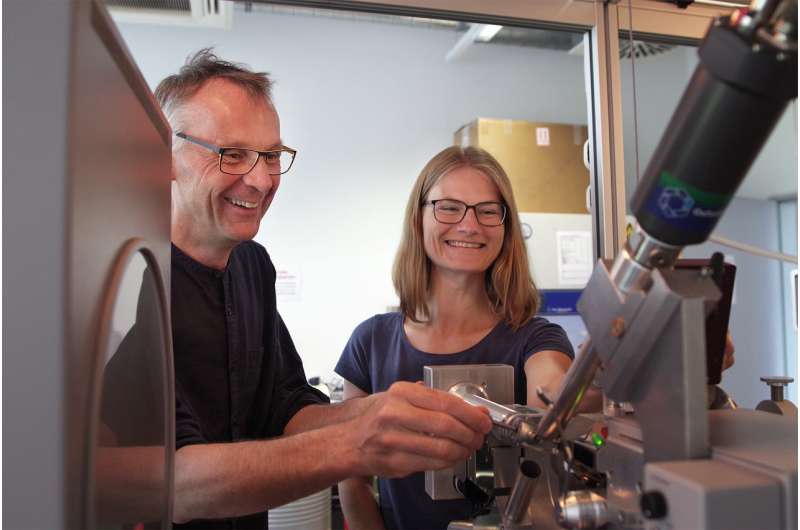Proteins as a 'shuttle service' for targeted administration of medication

Precise targeting of medicine is no longer a vision of the future. Friedrich-Alexander-Universität Erlangen-Nürnberg (FAU) has successfully developed proteins that function like a shuttle and release medication directly at the site where it is needed. The study could serve as a model and could enable targeted and tissue-specific administration of medication in future.
Using medication in a targeted manner and delivering it without damaging healthy tissue is a key issue in pharmaceutical research. Staff at the FAU's Chair of Biotechnology led by Prof. Dr. Yves Muller and lead author of the study Karin Schmidt have developed a new solution for this process. In collaboration with researchers from Friedrich-Schiller Universität Jena, they were able to demonstrate that a certain group of proteins can be restructured to form tissue-specific 'shuttles' for medication.
A computer-aided process developed by the Chair of Biotechnology and experiments in the laboratory were required in order to solve the difficult task of designing proteins in such a manner so as to allow substances (so-called legates) to be bound to them. The researchers used crystallography for this purpose. In a game of "Ping Pong' between computer applications and the laboratory, the researchers successfully converted a protein of human origin called antichymotrypsin into proteins to which they could bind a well-known antibiotic (Doxycyclin) and a widely-used cytostatic drug (Doxorubicin) used for treating cancer and autoimmune diseases. The bound medication was then released at the target tissue by splitting the shuttle protein with a so-called proteinase enzyme. The published study now provides experimental proof that the medication was bound to the proteins and describes how it was achieved.
Using the protein shuttles could enable medication to be used in lower doses in a targeted manner without major procedures and with fewer side effects. This would lower the impact of the medication on the rest of the body and other organs and enable the active ingredients in the drugs to be used more effectively. "We have a long and difficult path ahead of us before certain proteins can be used as shuttles in medical applications," says Prof. Dr. Yves Muller, who led the study. The first step is to increase the binding affinity of the drugs to the shuttle proteins. "The key has to fit even more precisely into the keyhole," says Prof. Dr. Muller. The Chair of Biotechnology at FAU will be intensely involved with this project during the next few years.
The next step involves extending the project to clinical applied research. Experimental proof must then demonstrate that the mechanisms also work in tissue. However, the researchers are hopeful that their model study has the potential for developing directed shuttles for medication and could be groundbreaking for targeted and efficient administration of medication.
More information: Karin Schmidt et al, Design of an allosterically modulated doxycycline and doxorubicin drug-binding protein, Proceedings of the National Academy of Sciences (2018). DOI: 10.1073/pnas.1716666115
Journal information: Proceedings of the National Academy of Sciences
Provided by University of Erlangen-Nuremberg



















